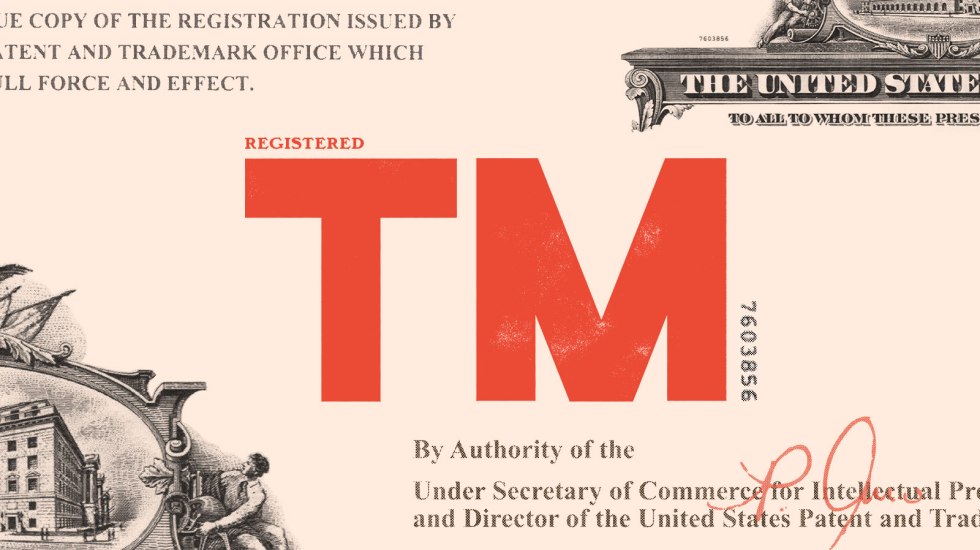This website uses cookies so that we can provide you with the best user experience possible. Cookie information is stored in your browser and performs functions such as recognising you when you return to our website and helping our team to understand which sections of the website you find most interesting and useful.
Can I Trademark My Tagline? Maybe.

Whether you’re starting a new company or reinvigorating an existing brand, a tagline can be an integral part of your identity. If you go ahead and spend time, money, and resources creating one, then you may want to prevent others from using it by getting it trademarked. But can a tagline always be trademarked? Not necessarily.
Why Trademark a Tagline?
Trademarks serve as an identification of source. This is no different for a tagline. For someone to hear it or see it, they know where it’s coming from, who or what that tagline represents, and what underlying goods or services it reflects. If others use that tagline, and use it without authorization, then it could confuse the public as to the origin of the goods or services.
So, that’s why you might seek to protect a tagline.
“Just Do It.” “It’s the Real Thing.” “You’re in Good Hands.” These are all taglines that immediately conjure connections to their respective brands. They have also all been trademarked.
So yes, you can protect a tagline through trademark registration in the United States. But there are a number of limitations as to what is afforded trademark protection; for instance, a tagline that is too descriptive of a brand or organization’s products or services.
A Brief Overview of Trademark Law
One basic requirement for registration of a trademark is that it is distinctive. There is a spectrum of distinctiveness that is used to measure an applied-for trademark. On one end of the spectrum are “generic” marks. If you’re talking about a spoon (the eating utensil), you cannot trademark the word “spoon.” That’s a generic word and all spoon manufacturers must have the freedom to use this word to describe their products, so no one person or entity can be given this monopoly.
On the other end of that spectrum are arbitrary or fanciful marks. These are either entirely disassociated from the underlying product or service or they are words or terms that don’t exist in the dictionary or were made up by the originator. Those have the strongest degree of protection.
Closer to the generic side of the spectrum is the descriptive area, which is where taglines have a tendency to fail if not careful or aware of this requisite in trademark registration. Remember that a trademark is always associated with an underlying product or service. The same goes for companies or product names. If I am an apple orchard or a fruit market, I am going to have a lot of difficulties, if not impossibility, to register my brand name as Apple. But if I’m a hardware or software developer, Apple is arbitrary as it relates to those goods, so there’s no issue of distinctiveness there.
Here’s an example of when a tagline falls into the descriptive area. Say I’m a spoon manufacturer and I want to have a tagline that says, “Concave eating devices.” Well, that describes what the spoon is. The United States Patent and Trademark Office and trademark doctrine won’t allow that, generally, because they don’t want to prohibit other spoon manufacturers from being able to adequately describe their own product.
To increase the likelihood of getting trademarked, you need your tagline to push into a more suggestive or arbitrary territory, something that doesn’t explicitly spell out what the use, benefit, activity, or function of the underlying good or service is. So a spoon manufacturer would have a better chance trying to trademark a tagline such as, “Slurp up life!”
There are instances where a descriptive trademark can be registered, but they are limited. They generally require that you have acquired a secondary level of distinctiveness. This is difficult to evidence and often requires a strong showing of association with the consumer public that your mark has acquired this market-use association, through time of use without opposition, expenditures on promoting the mark, surveys proving market knowledge of the mark and its owner, and other evidentiary items. This is a more nuanced topic of trademark law that would deserve its own discussion.
How To Research Your Tagline
How can you begin to check if your tagline idea is unique? You can perform a cursory examination on your own starting with the most simple of Google searches. If things look free and clear, you’ll then want to search the United States Patent and Trademark Office’s website. The search functions can be a little daunting, but the site has a very comprehensive list of all registrations and applications. Even then, though, you’re not even halfway there because the application process itself (not the search) is a much more thorough review and examination of the proposed trademark, and an application examiner will do a very thorough search that includes many parameters that would not occur to most people trying to mimic that search on their own.
It’s a good practice, ahead of filing a trademark application, to have both a substantive review of the proposed mark, and to then review any sort of use of an identical or potentially confusingly similar mark in the marketplace. In order to be perfectly confident and comfortable that your application is going to proceed and that you’re not potentially infringing on someone else’s mark, it’s best to enlist the help or assistance of an attorney who is an expert at performing diligence in this area. (Wink.)
The Tagline Application Process
A trademark application for a tagline is not any different than an application for any other trademark. The application is filed with the USPTO and will identify the trademark itself and associate it with an underlying product and/or service (which is identified by the USPTO as a class). There is a general agreement among many countries to use the same class identification system.
Then that application is assigned an examiner, which is an attorney employed by the USPTO, who is going to review the application and apply the tests that you may have had done beforehand through search and analysis.
The examiner is also going to look at the substantive issues, of which there are many. For instance, “Is this trademark descriptive of its underlying product or service?” If they find any of those issues, they will temporarily reject the application and send it back to the applicant.
The applicant will have a period of time in which they can argue with the USPTO (kind of like a little micro-litigation). You can try to convince the examiner that you are right and that they have misconstrued the law by citing instances of case law, examples of registered and non-registered marks, and their respective issues and resolutions.
If the mark is refused, you do have some options like you would in any real judicial proceeding. You can appeal a couple of times up to different bodies within the agency.
Once the mark proceeds past an examiner, it will be published in a trademark gazette that goes out to anyone who’s interested in reviewing it. The purpose of the publication is to provide 30 days for anyone in the world to oppose the mark.
If no one opposes the trademark, then it will proceed to registration, dependent on whether you are actually using the mark. There are two types of applications—in-use and intent to use. If it’s in-use, when you clear the publication hurdle, you will automatically register so long as you have provided sufficient evidence of use.
When you have intent and have not used the mark yet “in commerce,” meaning ordinary use in a consumer marketplace, then the USPTO will conditionally allow the mark to register and ask you to submit a statement of use and provide your evidence of use. If you cannot do that, don’t worry, you have six months to do so. You can file for up to five additional six-month extensions (giving you roughly three years to get it done).
After the trademark is registered, there are some maintenance milestones that occur at five and ten years, but for the most part, once you’re there, you’re in good shape, as long as you keep using the mark. Trademark doctrine is based on this policy of use and does not accept mark “squatting.”
So, if you think that you’ve got the perfect non-generic tagline that’s more than descriptive and you’ve done the due diligence to make sure it’s not obviously infringing on any competitors, then you’ve got a chance at landing that trademark.

About north street
We engineer the thoughtful transformation of great organizations. Our proven process helps us understand what your competitors are doing right — and wrong. Want to learn more? Let’s chat.



























